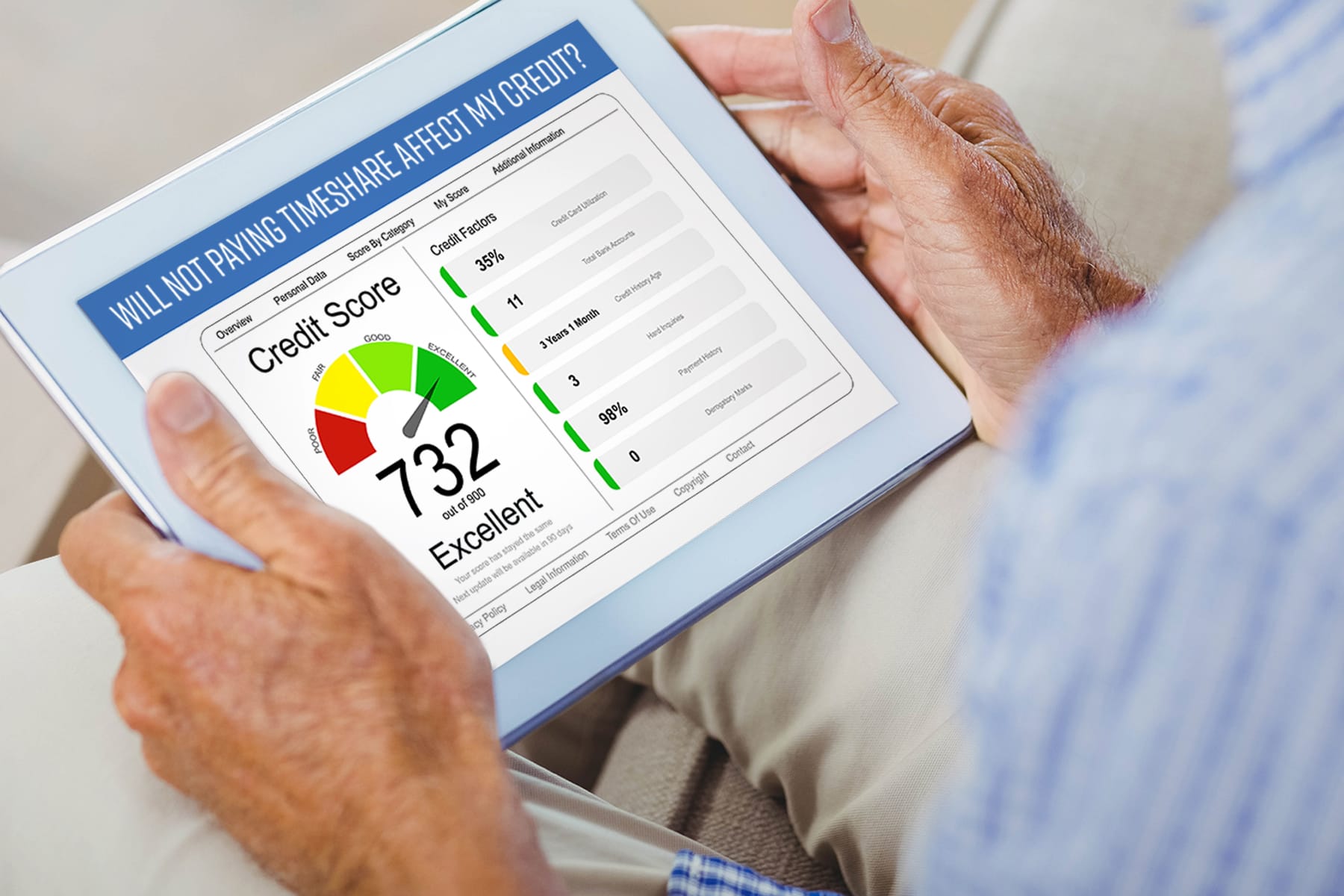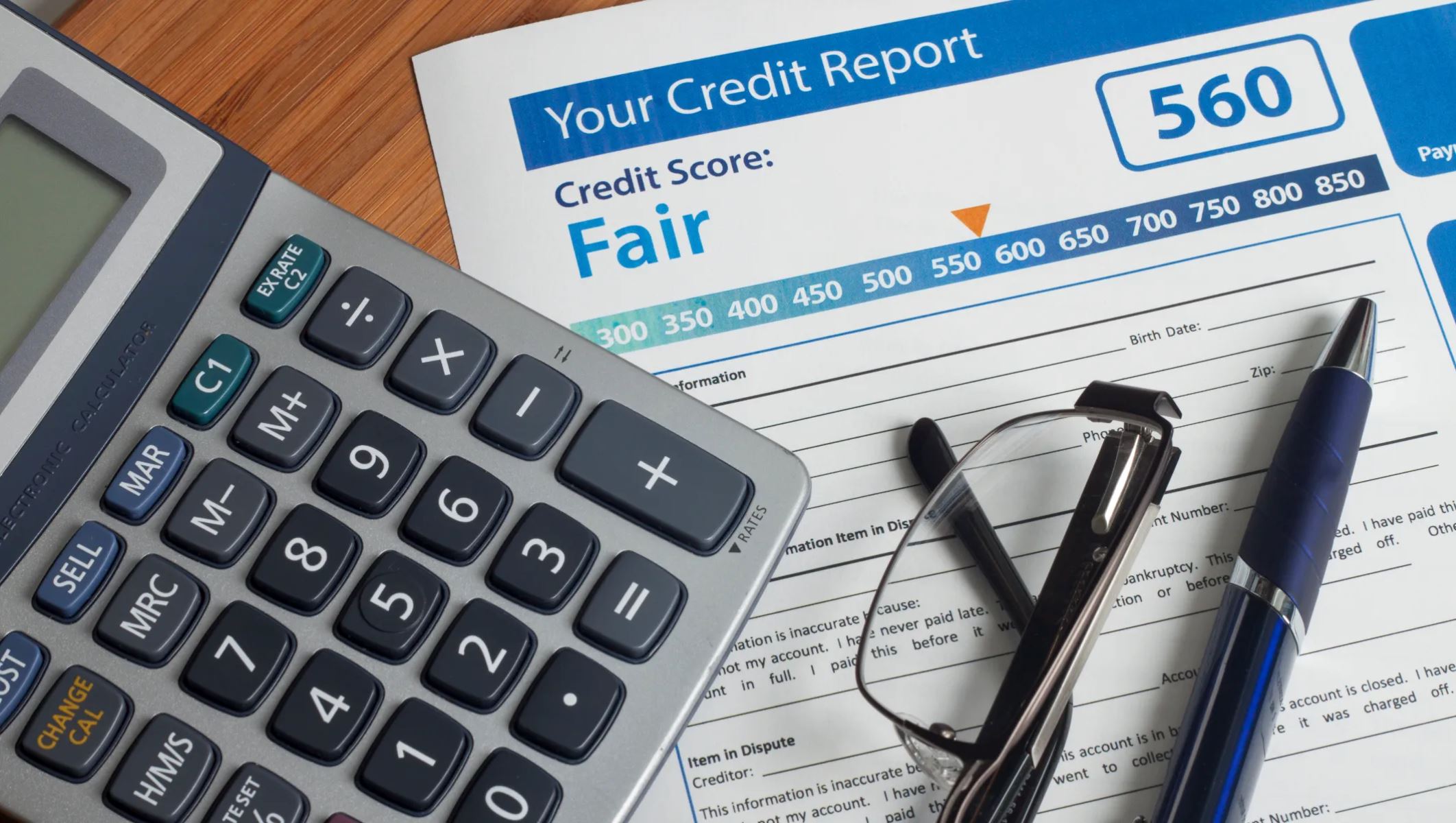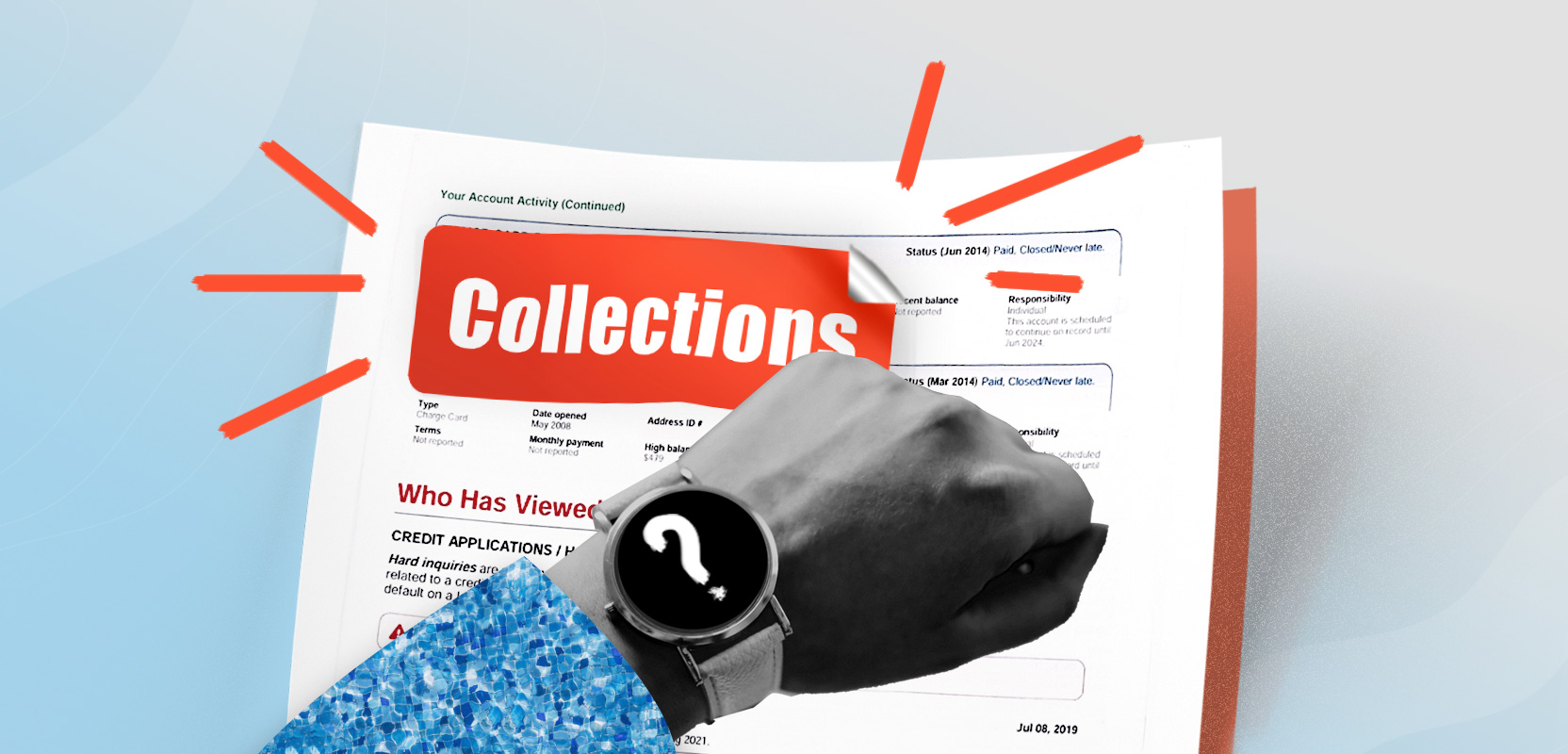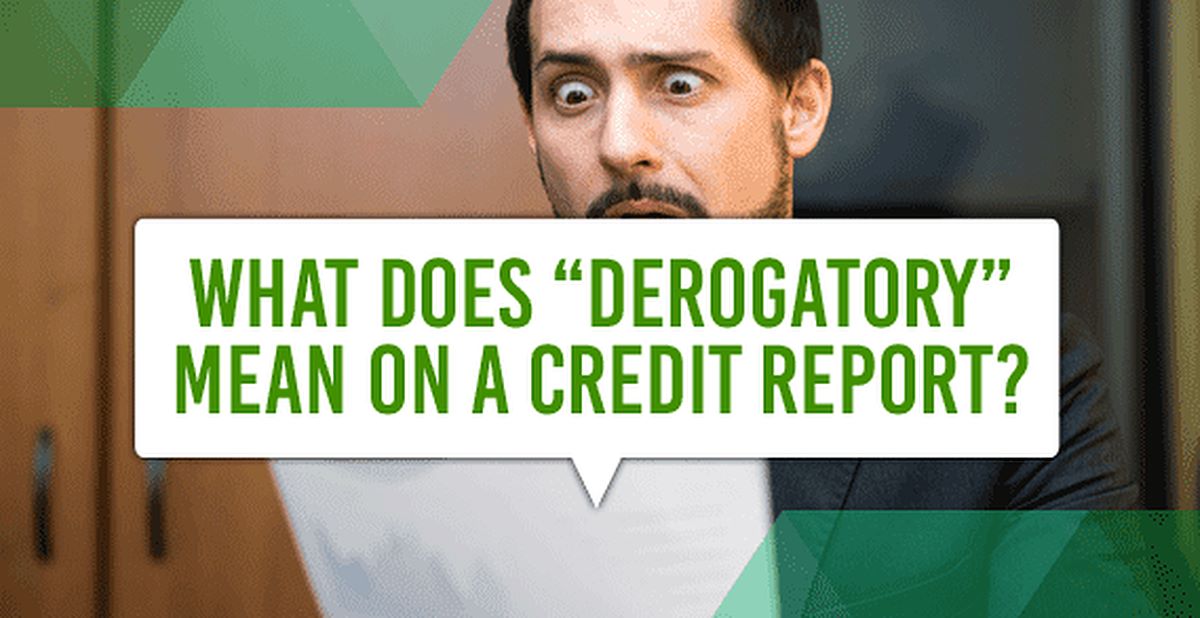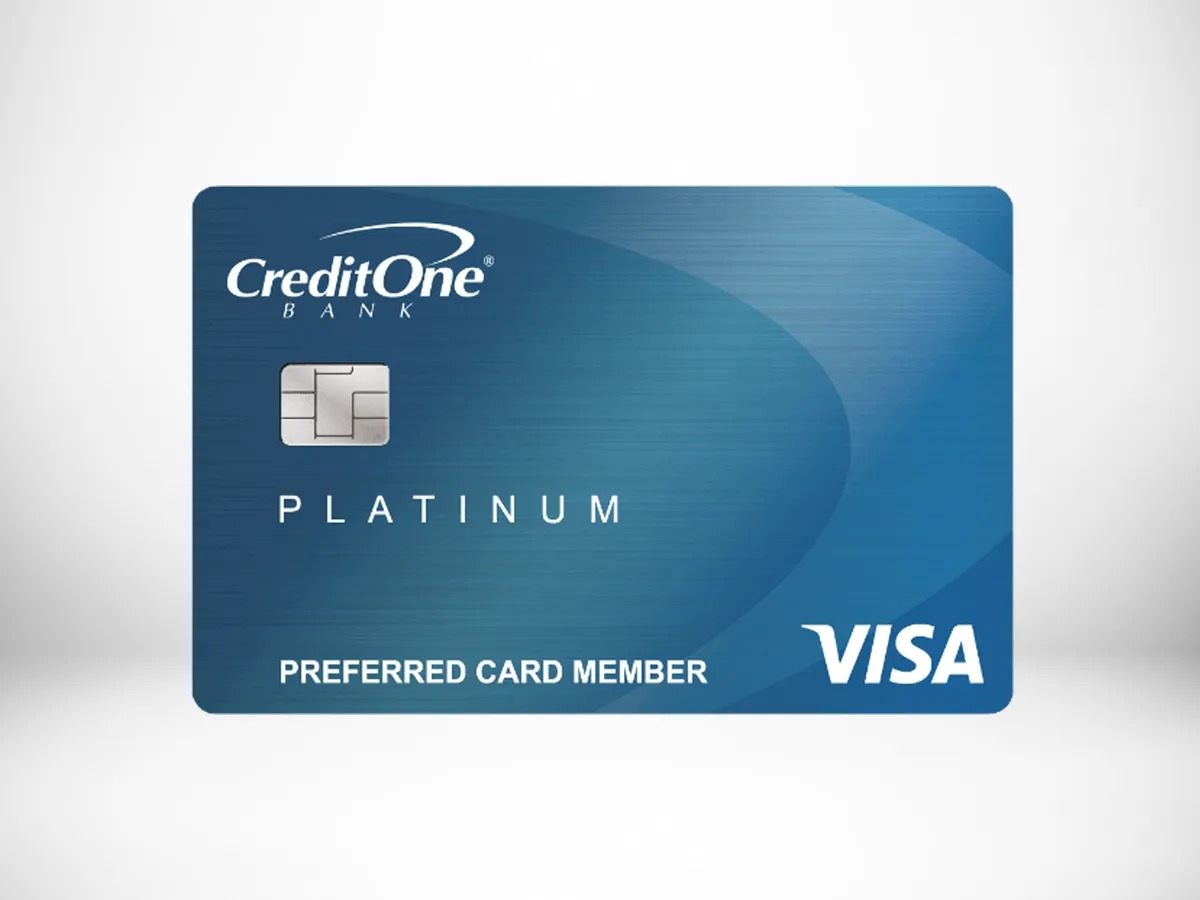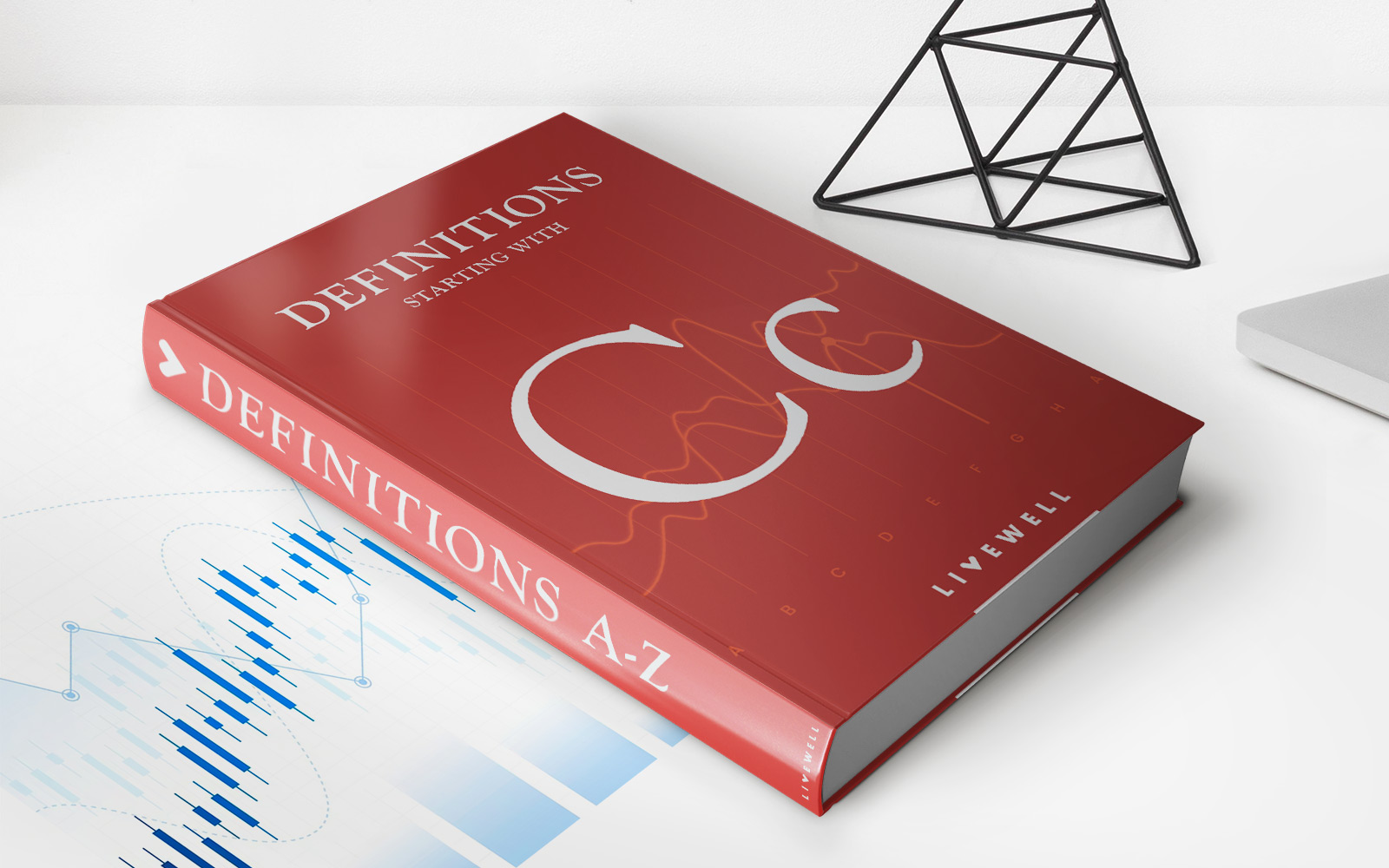Home>Finance>How To Remove Paid Collections From Credit Report
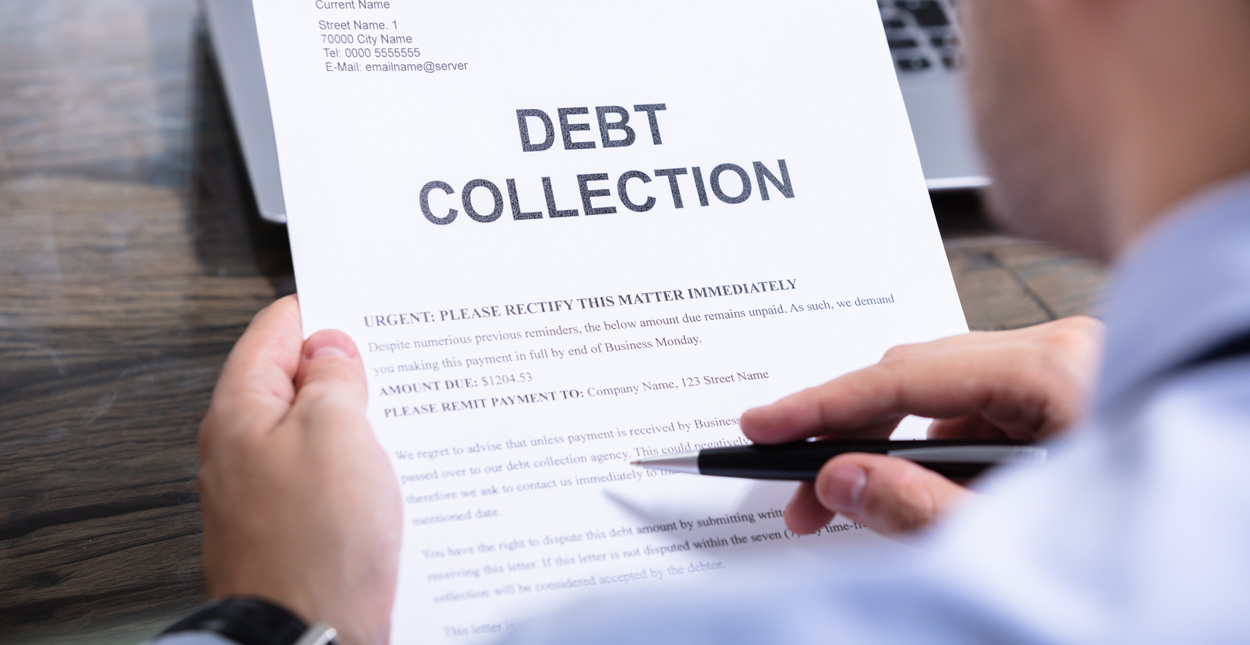

Finance
How To Remove Paid Collections From Credit Report
Published: October 20, 2023
Learn effective strategies to remove paid collections from your credit report and improve your financial standing. Discover how to handle finance-related challenges and achieve a healthier credit score.
(Many of the links in this article redirect to a specific reviewed product. Your purchase of these products through affiliate links helps to generate commission for LiveWell, at no extra cost. Learn more)
Table of Contents
- Introduction
- Understanding Paid Collections on Credit Reports
- The Impact of Paid Collections on Your Credit Score
- The Importance of Removing Paid Collections
- Step-by-Step Guide to Removing Paid Collections from Your Credit Report
- Review Your Credit Report
- Validate the Debt
- Negotiate a Pay for Delete Agreement
- Request a Goodwill Adjustment
- Dispute Inaccurate or Outdated Information
- Consider Hiring a Credit Repair Company
- Monitor Your Credit Report for Updates
- Conclusion
Introduction
Having a good credit score is essential for financial stability and access to favorable interest rates. Unfortunately, unpaid debts can lead to collections, which can have a negative impact on your credit report. However, once you’ve paid off these collections, they can still linger on your credit report and continue to affect your creditworthiness.
In this article, we will explore how to remove paid collections from your credit report. By addressing these collections, you can improve your credit score and increase your chances of obtaining credit in the future.
While it may seem daunting, the process of removing paid collections from your credit report is entirely possible. By understanding the steps involved and taking proactive measures, you can effectively remove these negative marks from your credit history.
We’ll provide you with a step-by-step guide on how to remove paid collections, including tips for negotiating with collection agencies and leveraging your consumer rights. Whether you choose to tackle this process on your own or enlist the help of a credit repair company, you’ll have the knowledge and tools to take control of your credit situation.
Remember, the goal is to remove the negative collections from your credit report, which in turn improves your creditworthiness and opens doors to better financial opportunities.
Without further ado, let’s dive into the world of paid collections on credit reports and discover how to remove them once and for all.
Understanding Paid Collections on Credit Reports
Before we delve into the process of removing paid collections from your credit report, it’s important to understand what exactly they are and how they impact your creditworthiness.
When you fail to repay a debt, your creditor may hand over the account to a third-party collection agency. These agencies then take on the responsibility of attempting to recoup the outstanding debt from you. Once the debt has been paid off, the collection status on your credit report should change to “paid collection” or “paid in full.”
While it’s certainly a positive step to have the collections account updated as “paid,” it’s important to remember that these paid collections will still appear on your credit report for a certain period. In most cases, they will remain on your report for seven years from the original delinquency date, negatively impacting your credit score during this time.
Paid collections can be seen by lenders and creditors when they review your credit report, signaling that you have a history of late or unpaid debts. This may make them hesitant to extend credit to you or offer less favorable terms.
Furthermore, your credit score, which is a numerical representation of your creditworthiness, can be negatively affected by paid collections. The influence of a paid collection on your credit score can vary depending on factors such as the original delinquency amount, the number of paid collections on your report, and the recency of the payments.
It’s important to note that different credit scoring models, such as FICO and VantageScore, may weigh paid collections differently. However, regardless of the model used, having paid collections on your credit report can lower your score and make it more challenging to obtain credit in the future.
Fortunately, there are steps you can take to remove paid collections from your credit report and mitigate their impact on your creditworthiness. In the following sections, we will guide you through the process, providing you with the necessary tools and strategies for successful removal.
The Impact of Paid Collections on Your Credit Score
Paid collections can have a significant impact on your credit score, which is crucial for obtaining credit and securing favorable interest rates. Understanding how these collections affect your credit score is essential in managing and improving your overall creditworthiness.
When a collection account appears on your credit report, whether it’s paid or unpaid, it can lower your credit score. The presence of a paid collection indicates to lenders and creditors that you have had difficulties managing and repaying your debts in the past.
The exact impact of a paid collection on your credit score will depend on various factors, including the scoring model used and the overall content of your credit history. In general, though, a paid collection can cause your credit score to decrease significantly.
One important factor to consider is the recency of the paid collection. Recent collections have a more substantial negative impact on your credit score compared to older collections. This is because lenders assume that recent payment issues are a more accurate reflection of your current financial situation.
The number of paid collections on your credit report also plays a role in the impact on your credit score. If you have multiple paid collections, it can signal to creditors that you have a pattern of financial irresponsibility, leading to a more significant drop in your score.
Another crucial element is the original amount of the collection. Larger collection amounts generally have a more detrimental effect on your credit score. Lenders may view unpaid or paid large debts as a higher risk, as it indicates a potential inability to manage larger financial responsibilities.
It’s important to note that different credit scoring models, such as FICO and VantageScore, treat paid collections differently. FICO, for example, distinguishes between medical collections and non-medical collections, with medical collections holding less weight in their scoring algorithms.
Despite these variations, it is universally true that paid collections negatively impact your credit score and can hinder your ability to obtain credit in the future. However, it’s crucial to remember that the impact will lessen over time as the paid collection ages on your credit report.
Fortunately, you don’t have to settle for a diminished credit score due to paid collections. In the next section, we’ll discuss the importance of removing paid collections from your credit report and how it can positively impact your credit score.
The Importance of Removing Paid Collections
Removing paid collections from your credit report is essential for several reasons. Not only can it improve your credit score, but it also opens up opportunities for better financial offers and a more stable financial future.
One of the main reasons to remove paid collections is to repair and improve your credit score. As we discussed earlier, paid collections have a negative impact on your credit score, making it difficult to qualify for loans, credit cards, and favorable interest rates. By removing these collections from your credit report, your score can begin to recover and increase over time.
When paid collections are removed from your credit report, it sends a positive signal to lenders and creditors. It shows that you have taken responsibility for past debts and have successfully resolved them. This clean credit report helps build trust and credibility, increasing your chances of obtaining credit and being viewed as a reliable borrower.
In addition to improving your credit score and creditworthiness, removing paid collections can also have practical benefits. For instance, having paid collections on your credit report may make it more challenging to qualify for housing rentals, as landlords often review credit reports to assess an applicant’s financial responsibility. By removing these negative marks, you increase your chances of securing a rental property.
Furthermore, removing paid collections can save you money in the long run. With a higher credit score, you’re likely to qualify for better interest rates and terms on loans and credit cards. This means you’ll pay less in interest charges over time, ultimately saving you money and allowing you to achieve your financial goals faster.
Aside from the practical benefits, removing paid collections can also provide peace of mind and a fresh start. It allows you to move forward with your financial journey without the burden of past debts and negative marks on your credit report. You can focus on building a positive credit history and establishing healthy financial habits.
It’s important to remember that paid collections will typically fall off your credit report after seven years from the original delinquency date. However, you don’t have to wait that long to see improvements in your credit score and financial opportunities. By actively seeking the removal of paid collections, you can take control of your credit report and accelerate your path towards financial success.
In the next section, we will provide you with a step-by-step guide on how to remove paid collections from your credit report, empowering you to take action and improve your credit profile.
Step-by-Step Guide to Removing Paid Collections from Your Credit Report
If you’ve paid off collections on your credit report, it’s time to take action and have them removed. Here is a step-by-step guide to help you navigate through the process:
- Review Your Credit Report: Obtain a copy of your credit report from the major credit bureaus – Equifax, Experian, and TransUnion. Carefully review the information to identify any paid collections that need to be addressed.
- Validate the Debt: Once you’ve identified paid collections on your credit report, validate the debt by sending a debt validation letter to the collection agency. Request that they provide proof of the debt’s validity within 30 days. If they cannot provide the necessary documentation, they are legally obligated to remove the collection from your credit report.
- Negotiate a Pay for Delete Agreement: Contact the collection agency and propose a pay for delete agreement. This involves offering to pay the outstanding debt in exchange for the agency removing the collection from your credit report. Get the agreement in writing before making any payment.
- Request a Goodwill Adjustment: If the collection agency refuses to remove the paid collection through a pay for delete agreement, you can try sending a goodwill letter. In this letter, explain your situation, take responsibility for the past debt, and kindly request that they remove the collection from your credit report as a gesture of goodwill.
- Dispute Inaccurate or Outdated Information: If you find any inaccuracies or outdated information related to the paid collection on your credit report, you have the right to dispute it. Submit a dispute letter to the respective credit bureau, provide supporting evidence, and request that they investigate and correct the information.
- Consider Hiring a Credit Repair Company: If you find the process of removing paid collections overwhelming or if you’re not getting the desired results on your own, you may consider hiring a reputable credit repair company. These professionals have the knowledge and resources to handle negotiations, disputes, and other necessary actions on your behalf.
- Monitor Your Credit Report for Updates: After taking the necessary steps to address the paid collections, regularly monitor your credit report to ensure that the collections have been removed. If any collections still appear, follow up with the credit bureau or collection agency to have them promptly removed.
It’s important to note that the success of removing paid collections from your credit report may vary depending on individual circumstances and the cooperation of the collection agencies. Patience, persistence, and keeping detailed records of your correspondence are key throughout this process.
By following these steps, you are actively working towards achieving a cleaner credit report and a stronger credit profile. Removing paid collections can significantly improve your creditworthiness and open doors to better financial opportunities.
Now that you have the knowledge and tools to remove paid collections, it’s time to take action and reclaim control of your credit history.
Review Your Credit Report
The first step in removing paid collections from your credit report is to obtain a copy of your credit report from each of the three major credit bureaus – Equifax, Experian, and TransUnion. You are entitled to one free copy of your credit report from each bureau every 12 months, which you can request through annualcreditreport.com. Alternatively, you can access your credit report through various online credit monitoring services.
Once you have your credit reports in hand, carefully review them to identify any paid collections that need to be addressed. Look for entries that indicate “paid collection” or “paid in full.” Note the names of the collection agencies, the original creditors, and the amounts of the paid collections.
While reviewing your credit report, also keep an eye out for any other errors, inaccuracies, or inconsistencies. These can include duplicate entries, incorrect personal information, or accounts that do not belong to you. It’s crucial to address these issues as well, as they can also negatively impact your credit score.
Take the time to thoroughly examine your credit reports and ensure that all the information is accurate and up-to-date. Remember, your credit report is a summary of your credit history and plays a crucial role in determining your creditworthiness. Identifying and addressing paid collections is the first step towards improving your credit profile.
If you spot any discrepancies or paid collections that should have already been removed from your report, make a note of them. These will be addressed in later steps, such as disputing inaccurate information or requesting removal from the collection agencies.
By taking the time to review your credit report, you are establishing a solid foundation for the subsequent steps in removing paid collections. It allows you to have a clear understanding of the existing collections on your report and the necessary actions you need to take to have them removed. Remember to keep detailed records throughout this process, including dates, correspondence, and supporting documentation.
Now that you’ve reviewed your credit report, it’s time to move on to the next step: validating the debt.
Validate the Debt
After reviewing your credit report and identifying the paid collections, the next step in removing paid collections from your credit report is to validate the debt. Debt validation is a legal right granted to consumers under the Fair Debt Collection Practices Act (FDCPA).
To validate the debt, you will need to send a debt validation letter to the collection agency associated with the paid collection. This letter should be sent within 30 days of receiving the collection notice or becoming aware of the collection.
In the debt validation letter, you will request that the collection agency provide proof of the debt’s validity. This proof should include documents that demonstrate the existence of a legally binding agreement between you and the original creditor, as well as information supporting the amount owed.
It’s important to note that collection agencies must respond to your debt validation request within a reasonable period. They must provide you with the necessary documentation or cease collection efforts if they are unable to validate the debt.
By requesting debt validation, you are ensuring that the collection agency has the legal authority to collect the debt and that the amount claimed is accurate. If the collection agency fails to validate the debt or does not respond within the given timeframe, they are legally obligated to remove the collection from your credit report.
If the collection agency does validate the debt and provides the necessary documentation, you can proceed with negotiating a pay for delete agreement or exploring other strategies for removing the paid collection from your credit report.
Be sure to keep a copy of all correspondence and documents related to the debt validation process. This documentation will be crucial in case you need to escalate the matter or refer to it later in the removal process.
Validating the debt is an important step in the process of removing paid collections from your credit report. It ensures that the collection agencies are held accountable and that you have accurate information about the debts on your credit report. Now, let’s move on to step 3: negotiating a pay for delete agreement.
Negotiate a Pay for Delete Agreement
Once you have validated the debt and confirmed its accuracy, the next step in removing paid collections from your credit report is to negotiate a pay for delete agreement with the collection agency. This agreement allows you to request that the collection agency remove the paid collection from your credit report in exchange for payment of the outstanding debt.
Start by contacting the collection agency either by phone or in writing to initiate the negotiation process. Be polite and professional in your communication, explaining that you have paid the debt and would like to explore the possibility of removing the collection from your credit report.
When negotiating a pay for delete agreement, it’s essential to be prepared and have a clear understanding of your financial situation. Determine how much you can afford to pay towards the debt and propose a reasonable payment amount to the collection agency.
It’s important to note that collection agencies are not legally required to accept a pay for delete agreement, but many are willing to negotiate. Remember to get any agreement in writing before making any payment.
If the collection agency agrees to the pay for delete agreement, ensure that the written agreement explicitly states their commitment to removing the paid collection from your credit report. It should specify that they will contact the credit bureaus and request the removal of the collection account once they receive payment.
Make the agreed-upon payment to the collection agency only after you have received the written agreement. Be sure to keep a copy of the agreement and the payment receipt for your records.
After the payment has been made, monitor your credit report closely to ensure that the paid collection is indeed removed. It may take some time for the removal to reflect on your credit report, so be patient.
If the collection agency refuses to enter into a pay for delete agreement, don’t give up just yet. There are still other strategies you can try, such as requesting a goodwill adjustment, which we will discuss in the next step.
Remember to maintain open lines of communication with the collection agency throughout the negotiation process. Being proactive and persistent can increase your chances of successfully negotiating a pay for delete agreement and having the paid collection removed from your credit report.
Now that you understand the negotiation process for a pay for delete agreement, it’s time to explore the option of requesting a goodwill adjustment in step 4.
Request a Goodwill Adjustment
If you were unsuccessful in negotiating a pay for delete agreement with the collection agency, don’t lose hope. Another strategy you can try to remove the paid collection from your credit report is to request a goodwill adjustment.
A goodwill adjustment is a request to the collection agency or original creditor, asking them to remove the paid collection from your credit report out of goodwill. This method primarily relies on appealing to their sense of understanding and empathy.
To request a goodwill adjustment, write a polite and sincere goodwill letter explaining your situation. In the letter, take responsibility for the past debt and provide any relevant circumstances that contributed to it. Emphasize your efforts in paying off the debt and rebuilding your financial situation.
It’s crucial to highlight any positive changes you have made in your financial habits since the collection occurred. This could include your responsible use of credit, on-time payments, and financial stability.
When crafting your goodwill letter, it’s important to be genuine, concise, and respectful. Avoid blaming or making excuses. Instead, focus on expressing your commitment to improving your financial standing and the impact that removing the paid collection would have on your creditworthiness.
Send the goodwill letter via certified mail to ensure it reaches the appropriate recipient. Keep a copy of both the letter and the delivery receipt for your records.
Be aware that requesting a goodwill adjustment does not guarantee success. It is at the discretion of the collection agency or original creditor to grant your request. If they agree to remove the paid collection, make sure to get their acknowledgment in writing, stating their intention to contact the credit bureaus and remove the collection.
Remember to follow up with the collection agency or original creditor if you have not received a response within a reasonable timeframe. Continue monitoring your credit report to ensure that the paid collection has been removed as agreed upon.
While obtaining a goodwill adjustment can be more challenging than a pay for delete agreement, it is still worth trying as it can have a positive impact on your credit report and overall creditworthiness.
If your request for a goodwill adjustment is unsuccessful, don’t be discouraged. There are still additional steps you can take, such as disputing inaccurate or outdated information on your credit report, which we will cover in the next section.
Now, let’s move on to step 5, where we’ll explore disputing inaccurate or outdated information.
Dispute Inaccurate or Outdated Information
If you encounter any inaccurate or outdated information related to the paid collection on your credit report, you have the right to dispute it. Disputing the information is an effective way to have erroneous or obsolete data removed from your credit report, including paid collections.
To initiate a dispute, you’ll need to send a dispute letter to the credit bureau(s) that is reporting the inaccurate information. In your letter, clearly identify the incorrect information regarding the paid collection and explain why you believe it to be inaccurate.
Include any supporting documentation, such as payment receipts, correspondence with the collection agency, or any other evidence that can help demonstrate the inaccuracies. Make sure to include copies of these documents and retain the originals for your records.
It’s important to send your dispute letter via certified mail with a return receipt requested to ensure proof of delivery. This way, you have evidence that your dispute letter was received by the credit bureau.
Upon receiving your dispute, the credit bureau will investigate the matter and contact the collection agency to verify the accuracy of the information. The Fair Credit Reporting Act (FCRA) stipulates that the credit bureau must complete their investigation within 30 days of receiving your dispute.
If the credit bureau finds that the information is inaccurate or cannot be verified, they are required to remove the paid collection from your credit report. You should receive a notification of the results of the investigation in writing, along with an updated copy of your credit report.
Monitoring your credit report regularly is essential, as it allows you to identify any inaccuracies or outdated information promptly. By disputing and having these errors successfully removed, you can ensure that your credit report reflects accurate and up-to-date information.
If the credit bureau does not remove the disputed information or concludes that it is accurate, you still have options. You can request to add a statement of dispute to your credit report explaining your side of the story. While this statement will not remove the paid collection, it provides your perspective to future lenders who review your credit report.
Be aware that the dispute process may require patience and persistence. However, successfully disputing inaccurate or outdated information can result in the removal of the paid collection from your credit report, improving your overall creditworthiness.
Now that you understand the process of disputing inaccurate or outdated information, let’s move on to step 6, where we’ll discuss the option of hiring a credit repair company.
Consider Hiring a Credit Repair Company
If the process of removing paid collections from your credit report feels overwhelming or if you’re not getting the desired results on your own, you may consider hiring a reputable credit repair company. These companies specialize in helping individuals improve their credit profiles and navigate the complexities of credit reporting.
A credit repair company can provide expertise and support throughout the process of removing paid collections. They have in-depth knowledge of credit laws and regulations, as well as established relationships with collection agencies and credit bureaus.
When choosing a credit repair company, it’s important to do thorough research and select a reputable and legitimate organization. Look for a company with a proven track record, positive customer reviews, and transparent pricing structures. Avoid companies that make unrealistic promises or charge exorbitant fees upfront.
Working with a credit repair company can offer several benefits. They can handle the communication and negotiation with collection agencies and credit bureaus on your behalf. They can also guide you through the necessary steps and provide personalized advice based on your unique credit situation.
However, it’s important to note that hiring a credit repair company does not guarantee the removal of paid collections from your credit report. The effectiveness of their services will depend on the specifics of your situation and the cooperation of collection agencies and credit bureaus.
Be mindful of the costs associated with hiring a credit repair company. They typically charge a monthly fee for their services, which can vary depending on the company and the level of assistance required. Make sure you fully understand the fees and services offered before entering into an agreement.
Remember, you have the option to remove paid collections on your own if you’re willing to put in the time and effort. However, if you prefer to have professional guidance and expertise, a reputable credit repair company may be a viable solution.
No matter whether you choose to work with a credit repair company or tackle the process independently, it’s important to stay proactive and engaged throughout the process. Ultimately, the goal is to remove paid collections from your credit report, improve your creditworthiness, and pave the way for better financial opportunities.
Now that we’ve explored the option of hiring a credit repair company, let’s move on to the final step: monitoring your credit report for updates.
Monitor Your Credit Report for Updates
After taking steps to remove paid collections from your credit report, it’s important to remain vigilant and monitor your credit report for updates. Monitoring your credit report allows you to ensure that the paid collections have been successfully removed and that your credit profile is accurately reflected.
Continue to check your credit report regularly, at least once every few months. You can obtain a free copy of your credit report from each of the three major credit bureaus – Equifax, Experian, and TransUnion – once a year through annualcreditreport.com. Alternatively, you can use various credit monitoring services that provide access to updated credit reports on a more frequent basis.
When reviewing your credit report, pay close attention to the section that details your credit accounts, including any previous collections. Look for any reappearing entries of paid collections that were supposed to be removed. It’s essential to address these discrepancies as soon as possible to prevent any negative impact on your creditworthiness.
If you find that a paid collection is still listed on your credit report even after you have taken the necessary steps for removal, reach out to both the collection agency and the credit bureau reporting the information. Provide them with documentation of the previous agreement or dispute, and request immediate action to rectify the situation.
While monitoring your credit report, also keep an eye out for any new collections that may have appeared. Promptly address any new unpaid collections to prevent them from damaging your credit score and repeating the process of removal in the future.
Being proactive about monitoring your credit report not only helps ensure the accuracy of the information but also allows you to catch any potential fraudulent activity or identity theft. If you notice any suspicious accounts or activity on your credit report, report it immediately to the credit bureau and take the necessary steps to protect yourself.
By staying diligent and regularly monitoring your credit report, you can maintain a clear and accurate credit profile. Moreover, it allows you to take prompt action should any issues arise, ensuring that you can enjoy the benefits of a favorable credit score and improved creditworthiness.
With this final step, you have completed the comprehensive guide to removing paid collections from your credit report. By following the preceding steps and remaining proactive, you’ve taken control of your credit history and set yourself on the path toward a brighter financial future.
Remember, improving your credit takes time and commitment. Stay consistent with responsible financial habits, make timely payments, and manage your debts wisely. Over time, the negative impacts of paid collections will fade, and you’ll see your credit score rise.
Best of luck as you embark on your journey towards better credit health!
Conclusion
Removing paid collections from your credit report is an important step towards improving your credit score and overall financial well-being. While it may seem like a challenging task, it is entirely possible with the right knowledge and strategies.
In this comprehensive guide, we have explored the importance of removing paid collections and provided a step-by-step process to help you navigate through the removal process. From reviewing your credit report to monitoring for updates, each step is crucial in ensuring that your credit report accurately reflects your financial responsibility.
By validating the debt, negotiating pay for delete agreements, requesting goodwill adjustments, disputing inaccurate information, and monitoring your credit report, you have taken proactive measures to remove paid collections and enhance your creditworthiness. Additionally, we discussed the option of hiring a credit repair company for professional assistance, if needed.
It’s important to remember that improving your credit takes time and patience. While removing paid collections can have a significant positive impact on your credit score, it’s equally crucial to maintain responsible financial habits moving forward. Pay your bills on time, keep your credit utilization low, and manage your debts wisely.
Regularly monitoring your credit report is vital even after successfully removing paid collections. By staying vigilant, you can quickly address any discrepancies or new negative entries that may arise, safeguarding your credit profile from potential damage.
With the knowledge and tools provided in this guide, you now have the ability to navigate the process of removing paid collections from your credit report. Remember that persistence and persistence are key in this journey. Stay committed to improving your credit health and taking control of your financial future.
By actively working to remove paid collections and building a positive credit history, you pave the way for better financial opportunities, such as obtaining loans, renting an apartment, or securing favorable interest rates.
It’s time to take action and make a positive change. Start by reviewing your credit report, validating the debt, and exploring negotiation options for removal. With each step, you are one step closer to a brighter credit future.


